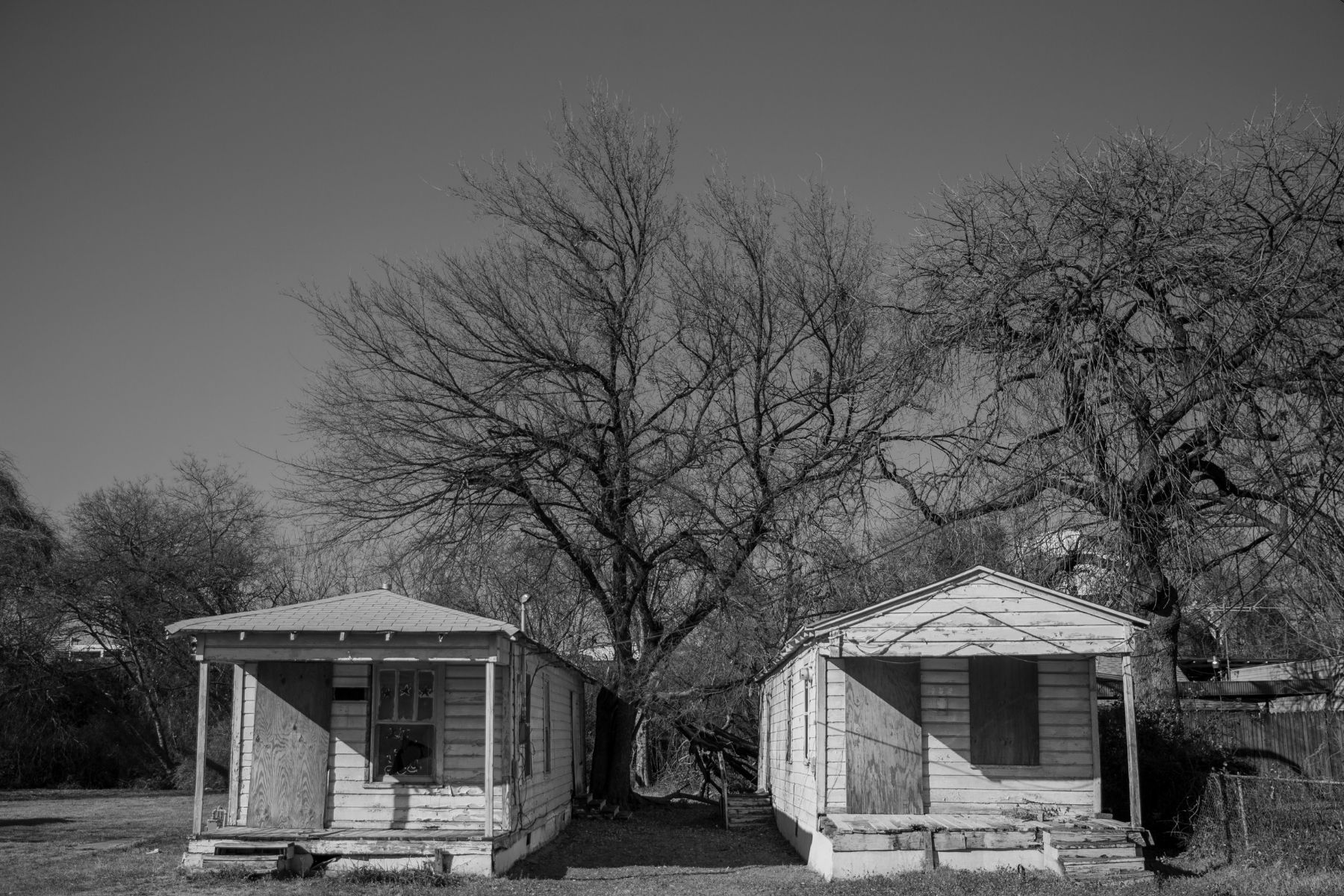Ilknur Ozgur was sitting in a pew at the Lone Star Missionary Baptist Church when she received a message from a spirit—or, she says, it might have just been a crazy idea. Wherever it came, the message presented Ozgur with a physical location for Family Dollar, an immersive piece of performance art based on the lives of residents in the West Main Street neighborhood in West Dallas. Ozgur, the founder of experimental performance art company Artstillery, approached Pastor Hersey L. Hammons with the message.
“Pastor, this show must happen on your land,” she said. “This is the history of the people in West Dallas. Something came over me and said it has to happen next door to Lone Star Baptist Church. Pastor, will you please allow me to have this on your land?”
Pastor Hammons says a few members of the congregation considered Ozgur crazy. But he gave Ozgur and Artstillery his blessing to perform Family Dollar on the church’s property.
“If that’s what the Lord spoke to you,” he replied, “then let’s make it happen.”
The church is about a quarter of a mile west of Beckley Avenue, not far from the Trinity River levees. Alongside its property is a series of rebuilt shotgun houses. Construction was courtesy their “beautiful builder” Ash Hankins, “the Whitest White guy you ever met and the whole church is in love with him,” Ozgur says; Mr. Teddy, a lifelong resident of West Main Street; and the Dallas-based architectural firm Mead & Hunt.
The houses are reminders of the Black and Latinx families of West Main, who began moving to the street in the early 1900s. According to the nonprofit bcWorkshop, which produced a report about the history of the neighborhood in 2014, West Main was shaped by the nearby T&P railroad line in the late 1800s. The railways separated the neighborhood from its surroundings, but later attracted industrial employers that hired members of the community.
Lots were subdivided in the early 1900s and sold for as low as $117.50. But the land was soon underwater following the Great Flood of 1908. After the levees were constructed alongside the Trinity, many Black residents made West Main their home.
“We know that by 1938 the families that were living there formed a bond that still exists today,” read the report, which was informed by research from former West Main resident Paula Hutchison.
Today, this historic neighborhood is being encroached upon by development. Rezoning and commercial pressure threaten to displace those who live in this vibrant community. Within the show, the shotgun houses function as supporting cast members. They’re more than the backdrop for the actors’ depictions of concerned residents, who are besieged by climate change and urban displacement. Although the show ended on July 31, the Nasher Sculpture Center partnered with Artstillery to hep attendees continue to experience Family Dollar in a new way.
There are now QR codes placed on the shotgun houses that link to previous performances of the show. The collaboration is the first offsite project for Nasher Public, the museum’s public art initiative. On the show’s opening night, Nasher staff volunteered and “sweat through their shirts’ ‘ to ensure Artstillery and West Main Street could enjoy the fruits of their labor, says Ozgur.
“Ílknur and her team have found value in the common life of people and have chosen to EXALT their stories,” said Pastor Hersey L. Hammons in the Dallas Morning News.
The show began with a workshop in 2016 and the experimental performance art company has since invested itself into the West Main Street community, from attending service at Lone Star Missionary Baptist Church, donating Christmas gifts, and conducting creative arts workshops for children. Their relationship now extends beyond the performance. Morgana Wilborn, a co-writer and director of Family Dollar, characterized their community engagement as “love relationships.”
Wilborn, an experienced theater arts professional in Dallas, spoke about Artstillery’s intention to center people who never had a chance to tell their story.
“How many of our elders are reached out to any given Diaspora?” Wilborn asked. Her statements echo the beginnings of The Federal Writers’ Project, a New Deal-era legislation that hired writers like Zora Neale Hurston to archive narratives of formerly enslaved African Americans.
Theater possesses the ability to document historical and contemporary experiences of communities lost to time, or in this case, the displacement of culturally rich, historic neighborhoods of color by way of development and zoning. Over time, the creative arts discipline has been used as a tool by those in power to decide whose story is worthy to be told. Artillery wants to create a “space where you exist to learn more about people, and to hear their voice and their story,” Wilborn says.
Family Dollar is the peoples’ play. After one performance, Wilborn recalled seeing the grandchildren of Miss Paula Hutchison, the community leader who produced the research for bcWorkshop, developing their own play in one of the shotgun houses. She described the idyllic childhood moment as “the energy that continues beyond the stories,” an experience which speaks to Artstillery and Family Dollar’s presence within the community.
Ozgur credits Miss Paula and the Lone Star Missionary Baptist Church for the show’s success. For more than five years, Ozgur engaged in conversations with community members to inform the piece. To this day, she is referred to as Sister Ilknur by the congregation. The moniker is a term of endearment and respect by members who see Ozgur and Artstillery as true partners.
Ozgur and Wilborn continue to invest in Artstillery and the West Main Street community, because of their love for the neighborhood who trusted themselves and their experiences with an experiential performance art company and Ozgur’s crazy idea—and the spirit that brought it to her.
323 W. Main Street. Open to the public in the daylight hours.





